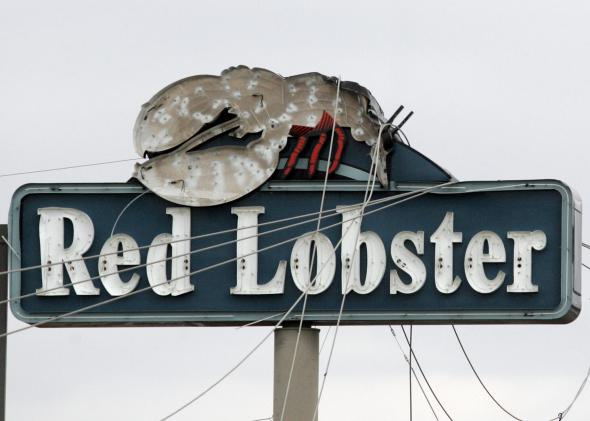I’ve noticed that most media coverage of Red Lobster’s woes as Darden Restaurants seeks to divest itself of the ailing chain avoids the elephant in the room: Red Lobster serves bad food.
There’s maybe an anti-snob thing going on where fancy-pants coastal journalists and activist investors don’t want to be seen as looking down on an American casual dining classic. But there’s casual dining and then there’s Red Lobster, which is actually quite a bit more expensive than a Chili’s or an Applebee’s. If you’re going to charge more money, then it’d be nice to be able to say you have a better product. But an Admiral’s Feast is going to cost you more than chicken fajitas, and a lobster dish will cost you more than baby back ribs. And yet rather than being better, the Red Lobster offerings are worse.
Traditionally I think Red Lobster had two things going for it. One was that few other people were in the “bring frozen seafood inland” game so they had a nice level of separation from the competition. The other is that they’d perhaps succeeded in positioning themselves as a kind of veblen good, where the high price was part of the point. Hence the emphasis in the marketing on the lobster—the most premium product—rather than, say, the biscuits.
But this is the kind of strategy that’s prone to unraveling. First some more places open up that sell seafood, and more seafood works its way onto other menus. That starts to make Red Lobster look less special, and in fact reveals its recipes to be somewhat subpar. Then you quickly approach a tipping point where “let’s go to Red Lobster” starts changing meaning from “I’m showing off with my fancy dinner” to “I’m a sucker who’s overpaying for bad food.” Now you’re doomed.
